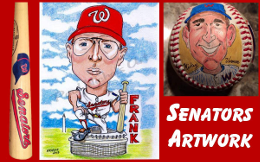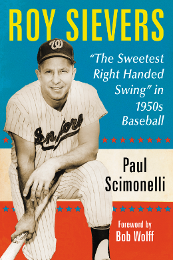The following segment describes the various leagues and teams that comprised the Steel Leagues, followed by a brief review of the players in the Great War and a summation of the Steel Leagues from the period.
This commentary gives an interesting insight into the Steel Leagues, “Down at Wilmington, Delaware, baseball is all the rage, several thousands of fans were unable to get into the Steel League’s $93,000 park recently. The Wilmington’s played the Bethlehem’s, and among the former major leaguer players who “worked” on the field were Jeff Tesreau, George Dumont, Joe Jackson, Lee Dressen, Patsy Gharritty and others who left the professional arena recently, presumably to avoid military service. It is said that offers amounting to $700 a month have been made to star players who still are with major league clubs, but who must “work or fight” when their cases come before the draft boards. Needless to say where these men will “labor” if they are forced to leave their present employees.”
All three mentioned above, Joe Jackson, George Dumont and Ed Gharrity played in the Bethlehem Steel League. In 1917 the league was staffed by amateurs, not so in 1918. Here is the write-up on the league in the 1918 Spalding Guide; “The Bethlehem Steel Corporation Base Ball League, which last year played its second season, consisted of six clubs, each one of which represented a plant of the corporation, namely, Bethlehem, Pa., Steelton, Pa., Lebanon, Pa., Fore River, Mass., Sparrow’s Point, Md., and Wilmington, Del. The last named city was represented by the club of the Shipbuilding Corporation, Harlan Plant. Very keen rivalry existed and the playing was of the highest caliber.”
“All players were bona fide employees of the corporation and embraced such well-known major league players as Jeff Tesreau, Walter Holke, Ed Fitzpatrick, “Paddy” Bauman, Earl Blackburn, Gene Dumont, Jess Buckles, Sailor Stroud, Billy Kopf, Jacobson, Ed Gharrity, Joe Jackson, Fred Payne, Hugh High, Allan Russell, Dave Roth, Bill Ritter, John Beale, Clyde Engle, Chick Fewster, “Runt” Walsh, “Lefty” Russell, Eddie Plank, “Bud” Weiser, George Cockill, Norman Plitt, “Dutch” Leonard, Zinn Beck, Jack Knight, Steve Yerkes, Fred Beebe, Bobby Stowe, Andy McConnell, Mike Mowery, Mickey Lalonge and Al Mamaux.”
“The standing of the clubs at the close of the regular season was as follows;”
Won Lost
Steelton 12 8 .600
Bethlehem 12 8 .600
Sparrows Point 10 10 .500
Wilmington 10 10 .500
Lebanon 9 11 .450
Fore River 7 13 .350
“As two teams finished in a tie for first place, a series of three games was arranged to decide the winners. Steelton won the first two, thereby being declared the victors, and each member of the
club was presented with a handsome gold watch.”
Exhibitions were played on the weekend or holidays, Players could often shift from one corporate team to another. Out west players in California joined the Steel League in that state.
Bethlehem Steel – California
As noted earlier Charles Risberg went to California to play for Bethlehem Steel. The San Francisco shipyard had been expanded in 1911 and the Alameda shipyard was added in 1916. According to his SABR Biography, Risberg had to skip town to avoid arrest after punching a man at the Sox’ team hotel for complaining about the Red Cross’ persistent fundraising efforts.
Other players in that league included Willie Kamm, Lefty O’Doul, Oscar Vitt and Buzz Arlett.
Baltimore Dry Dock and Shipbuilding Company
“Leaving the Binghamton club of the International League to manage the Baltimore Dry Dock and Shipbuilding Company team, Sam Frock was greeted by a mediocre aggregation representing the shipbuilders when he arrived in Baltimore in the early part of August. He immediately got busy and in a few days had signed Fritz Maisel, Dave Danforth, Joe Judge and a “number of other big leaguers. From the day Frock was placed in charge, the shipbuilders won thirty-seven games and scored 274 runs, while their opponents were able to gather only 97. Until “Babe”” Ruth’s All-Stars beat them in the final game of the season at Oriole Park, 4 to 3, they had not lost a contest. The company also was represented in the City and Suburban League. Baltimore’s leading amateur circuit, by players selected from the upper yard of the plant and known as the Upper Yard Club. Under the leadership of Jack Smith, Upper Yard won the pennant in this circuit with a percentage of .815, winning twenty- two contests and losing five.”
But the best team in the Steel leagues might have been the Reading nine. Returning to the 1918 Spalding Guide, “MG Moore, vice-president of the Reading Steel Casting Company, in writing of the record made by the ball team, says: “You will undoubtedly be interested in knowing that our team played a total of nineteen games during the summer. We played all games on Sundays, Reading being the only city in the State of Pennsylvania where Sunday Base Ball was played. We won seventeen out of nineteen games and defeated such teams as the Cost and Ac-
counting of League Island Navy Yard, Chester Shipbuilding, New York Shipbuilding, R. G. Dun’s, Hog Island, and, in fact, all of the industrial teams of the East. Our last game was for the industrial championship, with the Harlan Shipbuilding Company, which we won in the tenth innings by a score of, 6 to 5. The following stars appeared with the team: Lake, Chicago White Sox, catcher; ‘Lefty’ Williams, Chicago White Sox; Babe Ruth, Boston Red Sox, and Bob Steele, New York Giants, pitchers; Wash, New York State League, first base; Del Pratt, Yankees, second base; Roger Hornsby, St. Louis Cardinals, shortstop; Gus Getz, Brooklyn, third base; Frank Schulte, Pittsburgh, left field; Joe Jackson, Chicago White Sox, center field; Bill Wagner, Brooklyn, left field. From this line-up you will realize that we had the best industrial Base Ball team in the United States.”
Mr. Moore no doubt was pleased to have three of the best hitters ever to play baseball. They missed out on Ty Cobb. Cobb served, during a training exercise in Chaumont, France, both Cobb and Christy Mathewson received a full dose of poisonous gas.
From the 1918 Spalding Guide
After the war was over, Charles Piez, Vice-President and General Manager of the Emergency Fleet Corporation, announced that the character of professional athletic diversion, which they had tried to operate, had been a failure. In connection with this the New York Sun editorially observed:
“The most interesting aspect of Vice-President Piez’s announcement, in behalf of the Emergency Fleet Corporation, that the semi- professional sports which have not only been tolerated but encouraged in the shipyards are to be modified, to the point of elimination in many cases, is the fact that the men for whose benefit they were instituted are themselves at the bottom of the movement. It is asserted that the workers are convinced there has been too much entertainment and not enough labor; that attention which should have been spent on shipbuilding has been diverted to inconsequential spectacular enterprises.
“Of amateur sports, spontaneously taken up by the men, there is not to be an end. Mr. Piez ‘is all for amateur sport:
” ‘I have no objection if a professional athlete gives his eight hours’ work to the Government and then stages a boxing match or any other game, but there will be no more professional athletes in
the yards who are there, just because they are professionals.’
“It has been apparent in a number of cases that professionals enrolled among the workers were giving to ship production only such time as the sports in which they excelled did not require, and
in a number of instances there has been a good deal of artificiality about the enthusiasm for their efforts. To say that a Base Ball team composed of professionals of established reputation represented the shipwrights at a certain plant may have been technically true; actually it was untrue, except in the sense that a nine especially hired by a summer hotel to amuse its guests, the players being carried on the payroll as bellboys who never were expected to answer a bell, represented the employees of the hotel.”
“In the general desire to promote every scheme adapted to further the production of war essentials, nobody has criticized any of the entertainment programs arranged for the workers. It is gratifying, however, to find that the workers themselves have not considered the maintenance of professional entertainers absolutely necessary to their welfare. What seems to have been overlooked by some ardent promoters of vaudeville in numerous war industries is the inherent dignity and serious purpose of most of those for whose benefit these programs have been arranged. It betrays a gross ignorance of the men and women in shipyards and munitions plants to assume that they will not do their duty unless every few minutes a prestidigitator takes a rabbit out of a silk hat for their edification.”
“It may be added that nothing more ludicrous ever was seen on an American athletic field than the efforts of a hired cheer leader, a la American college, to induce enthusiasm among gray-headed ship workers. Think of trying to convert a fifty-year-old into a “rah, rah, boy.” “
Thanks to the 1918 Spalding Guide, accurate numbers are presented for the National League thanks to the efforts of John Heydler, League President.
According to his numbers, an average of 150 to 160 players were carried by the eight National league clubs. Of this number 103 entered the service. While Heydler reports that there is no way of determining the number who served overseas, he mentions two National League players were killed on duty. “The first was Marcus Milligan, a young pitcher obtained by the Pittsburgh club from Birmingham, killed in an aeroplane accident. The other was Captain Edward Grant, who, while acting major fell at the head of his battalion in the Argonne Forest. He was carried on the
Voluntary retired list of the New York club.”
Heydler also adds, “Several players were reported wounded. Pitcher Elmer Ponder, an aviator, won the French Cross for valor. Hank Gowdy, the Braves’ catcher, was the first major league player to volunteer. Christy Mathewson, Cincinnati manager, was made a captain in the gas and flame division and sent to France and, from the executive department of the league, Percy Haughton of Boston and Branch Rickey of St. Louis received their commissions as majors in the gas and flame division and also were sent overseas. In addition to those in active service, more than one hundred players found essential employment either during or just after the pennant season, in ordnance, in nitrate and steel works, shipyards, aeroplane factories or on farms. They became directly productive in various ways and more than one received the commendation of his employer for diligence and intelligence in his job. Some were promoted.” They brought adaptability, learned on the ball field, to their work. Heydler adds that according to his research a half dozen National Leaguers jumped to shipyard and steel leagues.”
I can find no specific information for the number of American Leaguers who served in the military or those who opted for the Steel Leagues. Heydler’s assertion that only “a half-dozen” jumped seems odd.
Heydler missed several who played in the National League and died during the war. Here is a listing of the major and some minor leaguers who died; Tom Burr played briefly with the 1914 Yankees died in a mid air collusion during a training exercise on 12 October 1918 in Cazaux, France. Robert “Bun” Troy died on 7 October 1918 in Petit Maujouym, France, from wounds suffered in combat. Troy was born in Germany. He played one game for the 1913 Tigers. Ralph Sharman, played briefly for the 1917 Athletics, he drowned during a training exercise at Camp Sheridan on 24 May 1918. John Cooper was signed by the White Sox but never made it to the majors. He was killed in action on 2 September 1918. Newt Halliday died on 6 April 1918 at the Great Lakes Naval Station of tubercular induced pneumonia. Finally Christy Mathewson‘s passing is said to have been a direct result of his gassing during a training exercise. Matty died on 7 October 1925.
Larry Chappell died 8 November 1918 in France from the Spanish Flu. He played for the White Sox, Indians and Braves in a four year career from 1914 to 1917. Harry Glenn, Browns, Spanish Flu while at the Aviation School in St. Paul, Minnesota.
Mention should also be made of minor leaguers; Leroy J Bruff and Dutch Hiner. Bruff played for the Frederick Hustlers in 1917. He was killed in action, Argonne Forrest on 29 September 1918. Dutch Hiner, another minor leaguer, died from the Spanish Flu in France on 2 September 1918. Hiner was from Troutville, Virginia.
The end of the war effectively ended the supremacy of the Steel Leagues. The players returned to the majors and a unique period of baseball passed into the mists of history. If the war had continued into 1919 it was well understood that the major leagues would not exist. Ruth’s year of discovery, drama and conflict would not have transpired. There would have been no Black Sox scandal and the structure of the two leagues might have been changed as well.
1918 Spalding Guide
Thanks to “Those Who Served,” website, http://www.thedeadballera.com/ThoseWhoServed_Casualties.html.
Bethlehem Steel League SABR article by Brian McKenna.
Swede Risberg SABR Bio by Kelly Boyer Sagert and Rod Nelson.
Also newspapers articles from the Washington Times and Washington Herald






